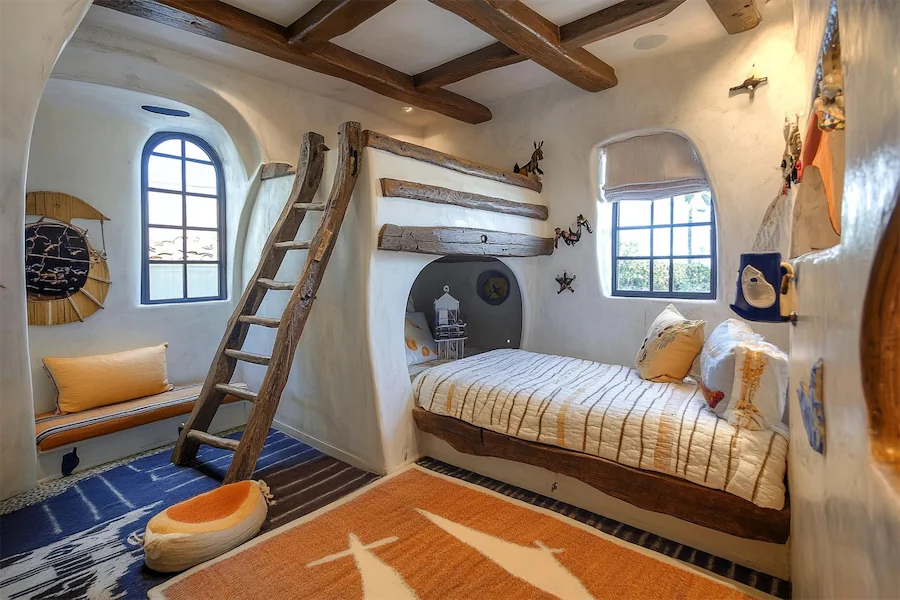Designing a Mediterranean-inspired kid’s room combines the warmth and vibrancy of Mediterranean aesthetics with the functionality required for a child’s space. This style emphasizes natural materials, earthy color palettes, and a harmonious blend of rustic and refined elements, creating an inviting and stimulating environment for children.
History and Origins of Mediterranean Style
The Mediterranean design style draws inspiration from the countries bordering the Mediterranean Sea, including Spain, Italy, Greece, and Morocco. It reflects a lifestyle that values relaxation, nature, and a connection to the outdoors. In interior design, this translates to spaces that are airy, light-filled, and adorned with natural materials and textures. When applied to children’s rooms, the Mediterranean style fosters a nurturing and cheerful atmosphere.
Key Features of a Mediterranean Kid’s Room
- Natural Materials: Incorporate materials such as wood, wrought iron, and natural fabrics like cotton and linen. These elements add warmth and authenticity to the room.
- Earthy Color Palette: Utilize warm, earthy tones like terracotta, ochre, and olive green, complemented by cool blues and whites reminiscent of the sea and sky. This combination creates a balanced and soothing environment.
- Textured Walls and Floors: Consider textured wall finishes or exposed wooden beams to add depth and character. Terracotta or patterned tiles can enhance the Mediterranean feel.
- Patterned Fabrics and Accessories: Incorporate patterns such as stripes, florals, or traditional Mediterranean motifs in bedding, curtains, and rugs to add visual interest and cultural flair.
Applications in a Kid’s Room
- Furniture Selection: Choose sturdy, rustic wooden furniture with a distressed finish to convey a lived-in charm. Opt for pieces with rounded edges for safety. A wrought iron bed frame can serve as a focal point, adding elegance and durability.
- Decorative Elements: Incorporate elements like woven baskets for toy storage, ceramic lamps, and wall art depicting Mediterranean landscapes or sea life to stimulate imagination and cultural appreciation.
- Functional Spaces: Create designated areas for play, study, and rest. A cozy reading nook with floor cushions and a low bookshelf encourages reading, while a small wooden desk provides a dedicated space for homework and creative activities.
Considerations When Designing a Mediterranean Kid’s Room
- Safety: Ensure all materials and finishes are non-toxic and child-friendly. Secure heavy furniture to walls to prevent tipping, and choose accessories that are durable and safe for children.
- Personalization: Involve your child in the design process to incorporate their interests and preferences. This could include selecting their favorite colors within the Mediterranean palette or choosing themes like marine life or nature.
- Adaptability: Design the room with flexibility in mind, allowing for easy updates as your child grows. Modular furniture and versatile decor can accommodate changing needs and tastes over time.
Conclusion
Creating a Mediterranean-inspired kid’s room blends cultural richness with practical design, resulting in a space that is both beautiful and functional. By focusing on natural materials, a harmonious color palette, and thoughtful decorative elements, you can craft a room that nurtures your child’s development and well-being.
